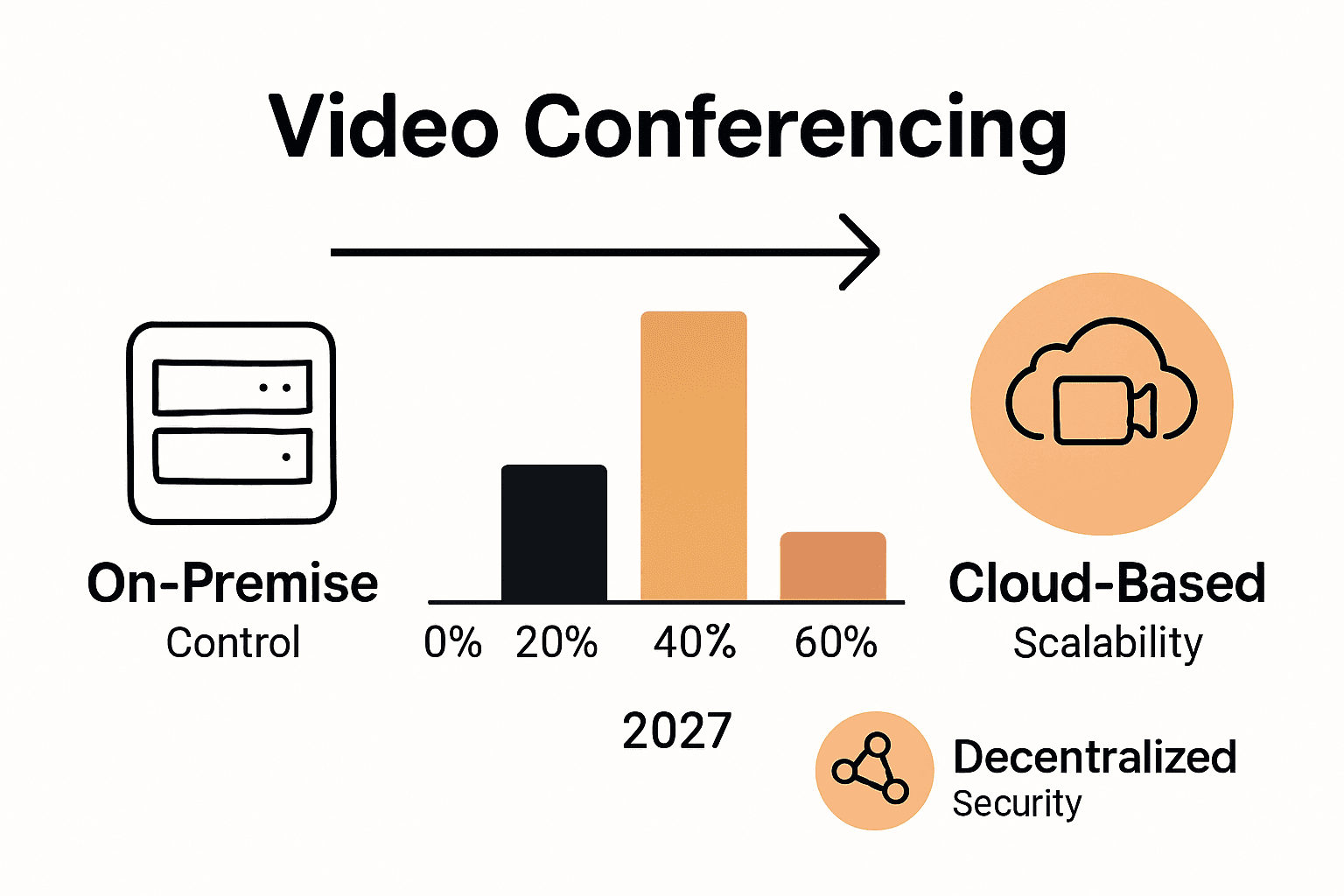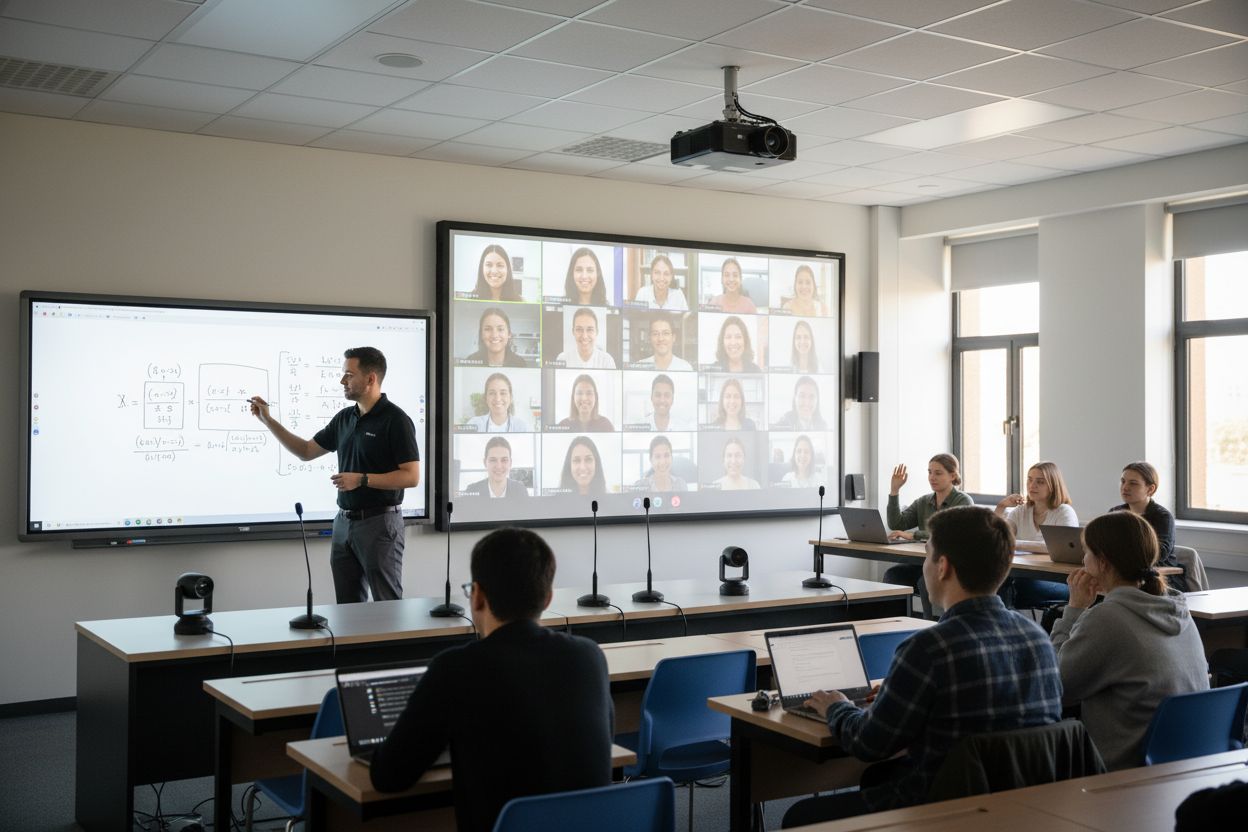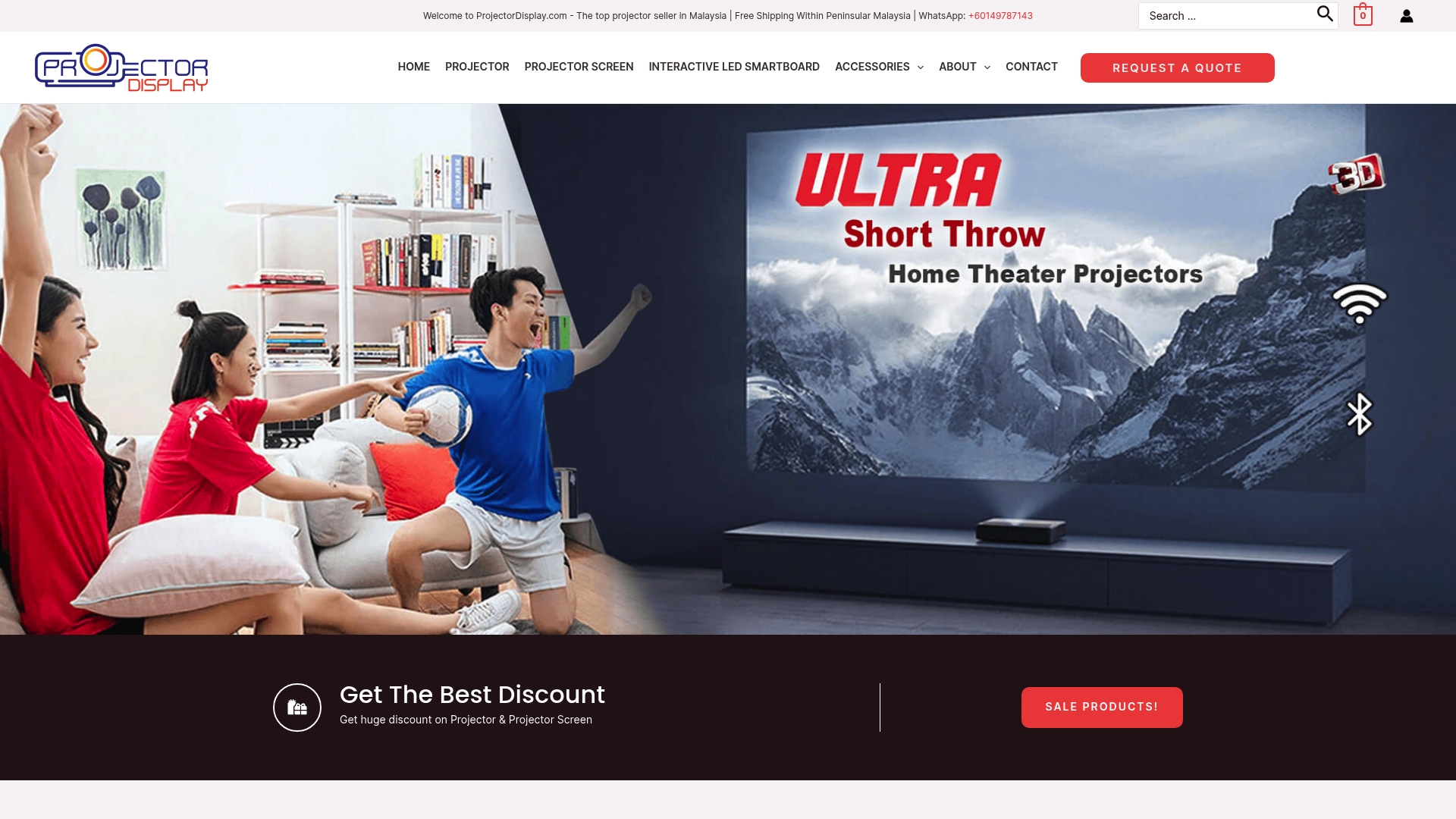Over 80 percent of businesses now rely on video conferencing for daily operations, showing just how deeply this technology shapes our personal and professional lives. What once demanded expensive gear is now a click away for anyone with a screen and internet. From classrooms to boardrooms, smarter software and cloud platforms deliver real-time connections, making distance almost invisible and conversations more meaningful than ever before.
Key Takeaways
| Point | Details |
|---|---|
| Video Conferencing Evolution | Video conferencing has transitioned to a critical communication tool, enhanced by digital compression and AI technologies, making it accessible for personal and professional use worldwide. |
| Deployment Models | The shift to cloud-based Video Conferencing as a Service (VCaaS) is significant, predicted to constitute over 70% of the market by 2027, providing scalability and reduced costs. |
| Innovative Features | Modern platforms now integrate AI capabilities such as real-time transcription and automatic translation, significantly improving collaboration and communication effectiveness. |
| Cost and Security Considerations | While cloud platforms reduce costs through subscription models, organizations must also prioritize security measures like end-to-end encryption and compliance with data protection regulations. |
Table of Contents
- Defining Video Conferencing Solutions Today
- Major Types And Deployment Models Explained
- Essential Features And How They Work
- Popular Applications For Home, Schools, And Business
- Evaluating Costs, Risks, And Security Factors
- Comparing Video Conferencing To Alternative Technologies
Defining Video Conferencing Solutions Today
Video conferencing has transformed from a complex corporate technology to an everyday communication tool accessible to anyone with an internet connection. Digital compression technologies now enable real-time audio and video transmission across global networks, connecting people seamlessly regardless of physical distance.
According to Wikipedia's videotelephony research, modern video conferencing systems rely on sophisticated digital compression techniques (codecs) that compress audio and video streams for smooth transmission over IP networks. These systems typically include essential components like:
- High-resolution webcams
- Professional microphones
- High-quality display screens
- Integrated speaker systems
Cloud-based solutions have revolutionized how organizations and individuals collaborate. As market trend research indicates, current platforms now offer advanced AI-powered features that dramatically enhance user experience. These intelligent capabilities include:
- Automatic meeting transcription
- Real-time noise cancellation
- Virtual background generation
- Automated meeting summary generation
- Participant engagement tracking
With rapid technological advancements, video conferencing has become more than just a communication tool—it's now a critical infrastructure for remote work, education, and global collaboration.
Major Types and Deployment Models Explained
Video conferencing deployment models have rapidly evolved, transforming from traditional on-premise systems to more flexible and scalable solutions. Organizations now have multiple architectural approaches to choose from, each offering unique advantages for different communication needs.
According to market trend research, cloud-based Video Conferencing as a Service (VCaaS) models are experiencing significant growth. By 2027, over 70% of video conferencing solutions are projected to be cloud-based, offering several critical benefits:
- Reduced infrastructure costs
- Automatic software updates
- Instant scalability
- Enhanced accessibility from multiple devices
- Lower maintenance overhead
Beyond traditional centralized models like Zoom and Microsoft Teams, emerging technologies are introducing innovative deployment strategies. Research from academic sources highlights the rise of decentralized peer-to-peer and blockchain-based architectures, which aim to address limitations in existing platforms.
These emerging models offer compelling advantages like improved network reliability, expanded coverage in remote regions, and enhanced privacy through distributed infrastructure. By spreading computational load across multiple nodes, these systems can potentially provide more robust and secure communication experiences compared to centralized platforms.

Here's a comparison of major video conferencing deployment models:
| Deployment Model | Key Benefits | Security/Privacy Considerations |
|---|---|---|
| On-Premise | Full control Custom integration |
Requires dedicated IT Higher upfront costs |
| Cloud-Based (VCaaS) | Scalability Lower cost Automatic updates |
Data stored offsite Vendor-managed security |
| Peer-to-Peer/Decentralized | Enhanced privacy Distributed reliability |
Newer tech Complex compliance |
Essential Features and How They Work
Artificial Intelligence has revolutionized video conferencing, transforming basic communication platforms into intelligent, adaptive collaboration tools. Modern solutions go far beyond simple audio and video transmission, integrating sophisticated features that enhance user experience and productivity.
According to market trend research, contemporary video conferencing platforms now offer several groundbreaking AI-powered features that dramatically improve communication effectiveness:
- Real-time transcription converting spoken language into text
- Automatic translation breaking down language barriers
- Advanced noise cancellation technologies
- Virtual background generation
- Intelligent meeting summary generation
- Participant engagement tracking and analytics
These intelligent features leverage complex machine learning algorithms to analyze audio and video streams in real-time. For instance, noise cancellation technology uses sophisticated sound processing techniques to distinguish between human speech and background noise, effectively filtering out distracting sounds like keyboard typing, ambient room noise, or street sounds.
Virtual background technologies employ advanced computer vision and machine learning models to accurately detect and segment human figures, allowing users to replace their physical background with professional images or branded environments. These features not only enhance user privacy but also provide a more polished and consistent visual presentation during professional video conferences.
Popular Applications for Home, Schools, and Business
Video conferencing has emerged as a transformative technology, bridging communication gaps across diverse sectors. From classrooms to corporate boardrooms, these tools have become essential for seamless collaboration and connection.
According to Wikipedia's videotelephony research, educational institutions have dramatically expanded their communication capabilities through video conferencing. Schools and universities now leverage these technologies to:
- Deliver courses to geographically dispersed students
- Conduct virtual field trips
- Connect with guest lecturers from around the world
- Enable cross-institutional research collaboration

Market trend research highlights the versatility of video conferencing in business and home environments. Modern platforms support numerous professional and personal use cases, including:
- Telehealth consultations
- Remote team collaboration
- Hybrid work arrangements
- Virtual professional networking events
- Global business meetings
These platforms have become particularly powerful with mobile-first interfaces and deep integrations with productivity tools.
Learn more about wireless screen mirroring technologies that can further enhance video conferencing capabilities, enabling professionals and educators to create more dynamic and interactive remote communication experiences.
Evaluating Costs, Risks, and Security Factors
Video conferencing economics have fundamentally transformed how organizations approach communication and collaboration. What was once an expensive infrastructure investment has evolved into flexible, scalable solutions that dramatically reduce operational costs.
Market trend research reveals that cloud-based platforms offer significant cost advantages through subscription models and reduced infrastructure requirements. Key financial benefits include:
- Elimination of extensive hardware investments
- Pay-as-you-go pricing structures
- Automatic software updates
- Reduced travel and transportation expenses
- Minimal maintenance overhead
However, the cost savings come with critical security considerations. According to global market insights, organizations must carefully evaluate potential risks. Security features have become paramount, with platforms now offering robust protections like:
- End-to-end encryption
- Multi-factor authentication
- Secure waiting rooms
- Meeting access locks
- Comprehensive user identity verification
Compliance remains a significant challenge, particularly for industries handling sensitive data. Regulations like GDPR and HIPAA require meticulous attention to data privacy, transmission protocols, and user consent mechanisms. Organizations must thoroughly assess their specific security requirements and choose platforms that provide comprehensive protective measures while maintaining seamless user experience.
Comparing Video Conferencing to Alternative Technologies
Communication technologies have evolved dramatically, with video conferencing emerging as a powerful medium that transcends traditional communication limitations. Unlike text messages, phone calls, or email, video conferencing offers a more immersive and nuanced interaction experience.
According to Wikipedia's videotelephony research, video conferencing distinguishes itself by combining real-time audio and visual transmission using specialized codecs and network protocols. This approach provides richer interaction compared to voice-only or text-based communication systems. Key comparative advantages include:
- Nonverbal communication cues
- Immediate visual feedback
- Enhanced emotional context
- Reduced communication misunderstandings
- More engaging interaction
Mobile collaboration research highlights how modern video conferencing extends beyond traditional boardroom setups. Contemporary platforms leverage wireless and cellular technologies, enabling multi-party conferences from virtually anywhere using handheld devices. This flexibility represents a significant leap from previous communication technologies, offering:
- Location independence
- Device versatility
- Real-time global connectivity
- Instant collaboration across geographical boundaries
By integrating advanced technologies like AI, machine learning, and cloud infrastructure, video conferencing has transformed from a novelty to an essential communication tool that bridges distances and creates more meaningful human connections. Learn more about wireless screen mirroring technologies that complement and enhance these communication experiences.
Transform Your Video Conferencing With Brilliant Visual Display Solutions
You have just learned how today's video conferencing relies on high-quality visuals, seamless connectivity, and intelligent features powered by AI. Yet, even the best software cannot fix a poor visual experience. Common pain points like unclear images, distracting backgrounds, or lackluster displays often hold back effective business presentations, virtual classrooms, and home meetings. Your meetings deserve to look as professional as they sound.
Imagine your communication powered by crystal-clear projection and interactive display equipment. Whether for remote work, online education, or virtual family gatherings, the right projector or screen ensures every participant sees content the way it was meant to be seen. Discover projectors with wireless connectivity, high lumens for any room, and smart technology designed to elevate your entire video conferencing setup at ProjectorDisplay.com.

Upgrade your remote collaboration today. Explore the latest projection solutions for businesses, educators, and home users directly at ProjectorDisplay.com and get the professional display advantage. For more on enhancing your meetings, see how wireless screen mirroring in Malaysia can revolutionize your online experience. Take control of your visual communication now.
Frequently Asked Questions
What are the main components of a video conferencing solution?
Modern video conferencing solutions typically include high-resolution webcams, professional microphones, high-quality display screens, and integrated speaker systems to facilitate effective communication.
How have cloud-based video conferencing solutions changed the landscape of remote work?
Cloud-based solutions offer benefits such as reduced infrastructure costs, automatic software updates, instant scalability, and enhanced accessibility from multiple devices, making remote work more efficient and flexible.
What are some key AI-powered features in contemporary video conferencing platforms?
AI-powered features include real-time transcription, automatic translation, advanced noise cancellation, virtual background generation, intelligent meeting summaries, and participant engagement tracking, all aimed at improving user experience and productivity.
How do decentralized video conferencing models improve security compared to centralized platforms?
Decentralized models enhance security by distributing computational loads across multiple nodes, reducing single points of failure and potentially offering improved privacy and network reliability when compared to centralized systems.
Recommended
- Wireless Screen Mirroring in Malaysia: 2025 Guide for Entertainment, Education, and Business – Projector Display
- Tech for Small Businesses: Complete Guide for 2025 – Projector Display
- Mirror Phone to Projector: Easy Ways for Malaysians 2025 – Projector Display
- Best Wireless Screen Mirroring Projector Guide 2025 – Projector Display

